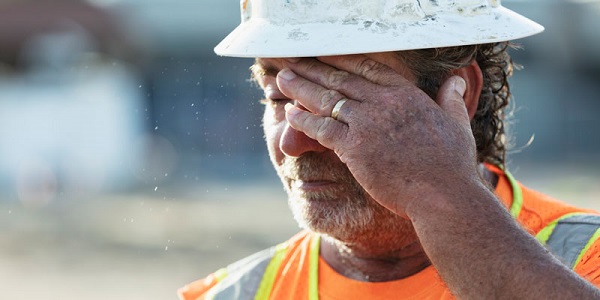Alberta
Ottawa’s oil and gas emissions cap will hit Alberta with a wallop

From the Fraser Institute
Even if Canada eliminated all its GHG emissions expected in 2030 due to the federal cap, the emission reduction would equal only four-tenths of one per cent of global emissions—a reduction unlikely to have any impact on the trajectory of the climate in any detectable manner or produce any related environmental, health or safety benefits.
After considerable waiting, the Trudeau government released on Monday draft regulations to cap greenhouse gas (GHG) emissions from Canada’s oil and gas producers.
The proposed regulations would set a cap on GHG emissions equivalent to 35 per cent of the emissions produced in 2019 and create a GHG emissions “cap and trade” system to enable oil and gas producers (who cannot reduce emissions enough to avoid the cap) to buy credits from other producers able to meet the cap. Producers unable to meet the cap will also be able to obtain emission credits (of up to 20 per cent of their needed emission reductions) by investing in decarbonization programs or by buying emission “offsets” in Canada’s carbon markets.
According to the government, the cap will “cap pollution, drive innovation, and create jobs in the oil and gas industry.” But in reality, while the cap may well cap pollution and drive some innovation, according to several recent analyses it won’t create jobs in the oil and gas industry and will in fact kill many jobs.
For example, the Conference Board of Canada think-tank estimates that the cap would reduce Canada’s GDP by up to $1 trillion between 2030 and 2040, kill up to 151,300 jobs across Canada by 2030, and national economic growth from 2023 to 2030 would slow from 15.3 per cent to 14.3 per cent.
Not surprisingly, Alberta would be hardest hit. According to the Board, from 2023 to 2030, the province’s economic growth would fall from an estimated 17.8 per cent to 13.3 per cent and employment growth would fall from 15.8 per cent to 13.6 per cent over the same period. Alberta government revenues from the sector would decline by 4.5 per cent in 2030 compared to a scenario without the cap. As a result, Alberta government revenues would be $4.5 billion lower in nominal terms in fiscal year 2030/31. And between 54,000 to 91,500 of Canada’s job losses would occur in Alberta.
Another study by Deloitte estimates that, due to the federal cap, Alberta will see 3.6 per cent less investment, almost 70,000 fewer jobs, and a 4.5 per cent decrease in the province’s economic output (i.e. GDP) by 2040. Ontario would lose more than 15,000 jobs and $2.3 billion from its economy by 2040. And Quebec would lose more than 3,000 jobs and $0.4 billion from its economy during the same period.
Overall, according to Deloitte, Canada would experience an economic loss equivalent to 1.0 per cent of GDP, translating into lower wages, the loss of nearly 113,000 jobs and a 1.3 per cent reduction in government tax revenues. (For context, Canada’s economic growth in 2023 was only 1.1 per cent.)
And what will Canadians get for all that economic pain?
In my study published last year by the Fraser Institute, I found that, even if Canada eliminated all its GHG emissions expected in 2030 due to the federal cap, the emission reduction would equal only four-tenths of one per cent of global emissions—a reduction unlikely to have any impact on the trajectory of the climate in any detectable manner or produce any related environmental, health or safety benefits.
Clearly, the Trudeau government’s new proposed emissions cap on the oil and gas sector will impose significant harms on Canada’s economy, Canadian workers and our quality of life—and hit Alberta with a wallop. And yet, as a measure intended to avert harmful climate change, it’s purely performative (like many of the government’s other GHG regulations) and will generate too little emission reductions to have any meaningful impact on the climate.
In a world of rational policy development, where the benefits of government regulations are supposed to exceed their costs, policymakers would never consider this proposed cap. The Trudeau government will submit the plan to Parliament, and if the cap becomes law, it will await some other future government to undo the damage inflicted on Canadians and their families.
Author:
Alberta
Made in Alberta! Province makes it easier to support local products with Buy Local program

Show your Alberta side. Buy Local. |
When the going gets tough, Albertans stick together. That’s why Alberta’s government is launching a new campaign to benefit hard-working Albertans.
Global uncertainty is threatening the livelihoods of hard-working Alberta farmers, ranchers, processors and their families. The ‘Buy Local’ campaign, recently launched by Alberta’s government, encourages consumers to eat, drink and buy local to show our unified support for the province’s agriculture and food industry.
The government’s ‘Buy Local’ campaign encourages consumers to buy products from Alberta’s hard-working farmers, ranchers and food processors that produce safe, nutritious food for Albertans, Canadians and the world.
“It’s time to let these hard-working Albertans know we have their back. Now, more than ever, we need to shop local and buy made-in-Alberta products. The next time you are grocery shopping or go out for dinner or a drink with your friends or family, support local to demonstrate your Alberta pride. We are pleased tariffs don’t impact the ag industry right now and will keep advocating for our ag industry.”
Alberta’s government supports consumer choice. We are providing tools to help folks easily identify Alberta- and Canadian-made foods and products. Choosing local products keeps Albertans’ hard-earned dollars in our province. Whether it is farm-fresh vegetables, potatoes, honey, craft beer, frozen food or our world-renowned beef, Alberta has an abundance of fresh foods produced right on our doorstep.
Quick facts
- This summer, Albertans can support local at more than 150 farmers’ markets across the province and meet the folks who make, bake and grow our food.
- In March 2023, the Alberta government launched the ‘Made in Alberta’ voluntary food and beverage labelling program to support local agriculture and food sectors.
- Through direct connections with processors, the program has created the momentum to continue expanding consumer awareness about the ‘Made in Alberta’ label to help shoppers quickly identify foods and beverages produced in our province.
- Made in Alberta product catalogue website
Related information
Alberta
Province to expand services provided by Alberta Sheriffs: New policing option for municipalities

Expanding municipal police service options |
Proposed amendments would help ensure Alberta’s evolving public safety needs are met while also giving municipalities more options for local policing.
As first announced with the introduction of the Public Safety Statutes Amendment Act, 2024, Alberta’s government is considering creating a new independent agency police service to assume the police-like duties currently performed by Alberta Sheriffs. If passed, Bill 49 would lay additional groundwork for the new police service.
Proposed amendments to the Police Act recognize the unique challenges faced by different communities and seek to empower local governments to adopt strategies that effectively respond to their specific safety concerns, enhancing overall public safety across the province.
If passed, Bill 49 would specify that the new agency would be a Crown corporation with an independent board of directors to oversee its day-to-day operations. The new agency would be operationally independent from the government, consistent with all police services in Alberta. Unlike the Alberta Sheriffs, officers in the new police service would be directly employed by the police service rather than by the government.
“With this bill, we are taking the necessary steps to address the unique public safety concerns in communities across Alberta. As we work towards creating an independent agency police service, we are providing an essential component of Alberta’s police framework for years to come. Our aim is for the new agency is to ensure that Albertans are safe in their communities and receive the best possible service when they need it most.”
Additional amendments would allow municipalities to select the new agency as their local police service once it becomes fully operational and the necessary standards, capacity and frameworks are in place. Alberta’s government is committed to ensuring the new agency works collaboratively with all police services to meet the province’s evolving public safety needs and improve law enforcement response times, particularly in rural communities. While the RCMP would remain the official provincial police service, municipalities would have a new option for their local policing needs.
Once established, the agency would strengthen Alberta’s existing policing model and complement the province’s current police services, which include the RCMP, Indigenous police services and municipal police. It would help fill gaps and ensure law enforcement resources are deployed efficiently across the province.
Related information
-

 Alberta2 days ago
Alberta2 days agoProvince to expand services provided by Alberta Sheriffs: New policing option for municipalities
-

 Bruce Dowbiggin1 day ago
Bruce Dowbiggin1 day agoIs HNIC Ready For The Winnipeg Jets To Be Canada’s Heroes?
-

 2025 Federal Election1 day ago
2025 Federal Election1 day agoCSIS Warned Beijing Would Brand Conservatives as Trumpian. Now Carney’s Campaign Is Doing It.
-

 2025 Federal Election2 days ago
2025 Federal Election2 days agoNo Matter The Winner – My Canada Is Gone
-

 Alberta1 day ago
Alberta1 day agoMade in Alberta! Province makes it easier to support local products with Buy Local program
-

 Health1 day ago
Health1 day agoHorrific and Deadly Effects of Antidepressants
-

 2025 Federal Election1 day ago
2025 Federal Election1 day agoCampaign 2025 : The Liberal Costed Platform – Taxpayer Funded Fiction
-

 2025 Federal Election1 day ago
2025 Federal Election1 day agoA Perfect Storm of Corruption, Foreign Interference, and National Security Failures


